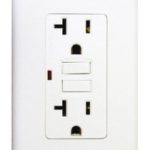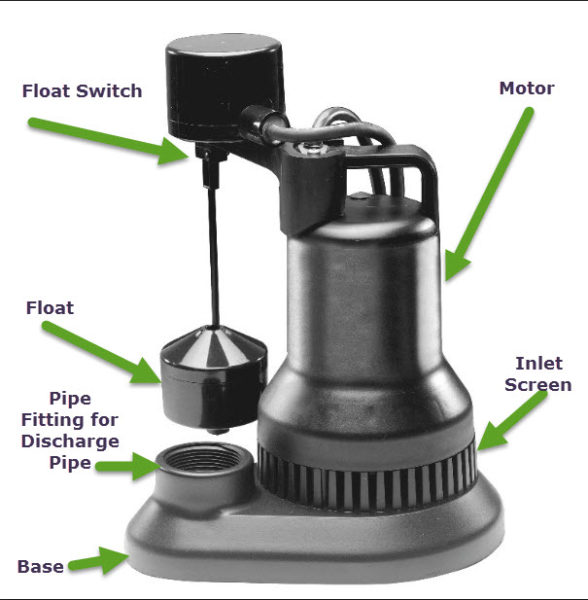Sump pumps are one of those items in your home that you only think about when it’s not working. Sump pumps just need to work when they are needed. Below are a few things to do to “check” and see if your pump is working (BEFORE you need it) and a short list of what you can do to maintain it so it lasts.
We get called all the time in the spring and early summer for Sump pump issues. here are a couple of things you can try to get your pump working again before you give us a call
- Check the GFCI – that’s the outlet that the sump pump is plugged into – it has a circuit breaker built into it, and it usually looks something like this:

the buttons may be the color of the outlet or black and red – either way, one should be a “test” button and one should be a “reset” button. Press the “test” button and you should hear a click – if you don’t the GFCI may already have been tripped. press the “reset” button and see if that gets things working again.
2. Lift the ball – most sump pumps use a float ball that flips a switch and starts the pump once water reaches a certain depth in the crock. if you can easily remove the lid (if there are pipes going into it, you can usually just slide it up the pipe, grab the float and give it a lift and see if the pump starts or makes any kind of noise. only do this for a few seconds if no water is present. This can tell you if the motor is functioning, but it won’t necessarily tell you if it will actually suck water.

3. Run water through it – If you can, put water in the crock, put enough in to get the float to activate and then watch it to make sure it actually pumps the water out.
If during any of these steps you find your pump is not working then it’s time to call a plumber.
Quarterly Maintenance:
- run A vinegar solution through the sump pump in order to clean it. Straight vinegar or slightly diluted (depending on your sense of smell) will work fine. kind of like cleaning a coffee maker.
- Make sure the sump pump’s float switch is not restricted in any way. If it is, it will cause the sump pump to not automatically kick on in case of a flood
- Lastly, clean all vents and air holes for maximum effectiveness – make sure there isn’t a ton of debris at the bottom of the sump crock.


I had no clue that most sump pumps use a float ball. I was going to be a used one from a guy online. But I don’t how to check for the float ball so I’ll just buy a new one.